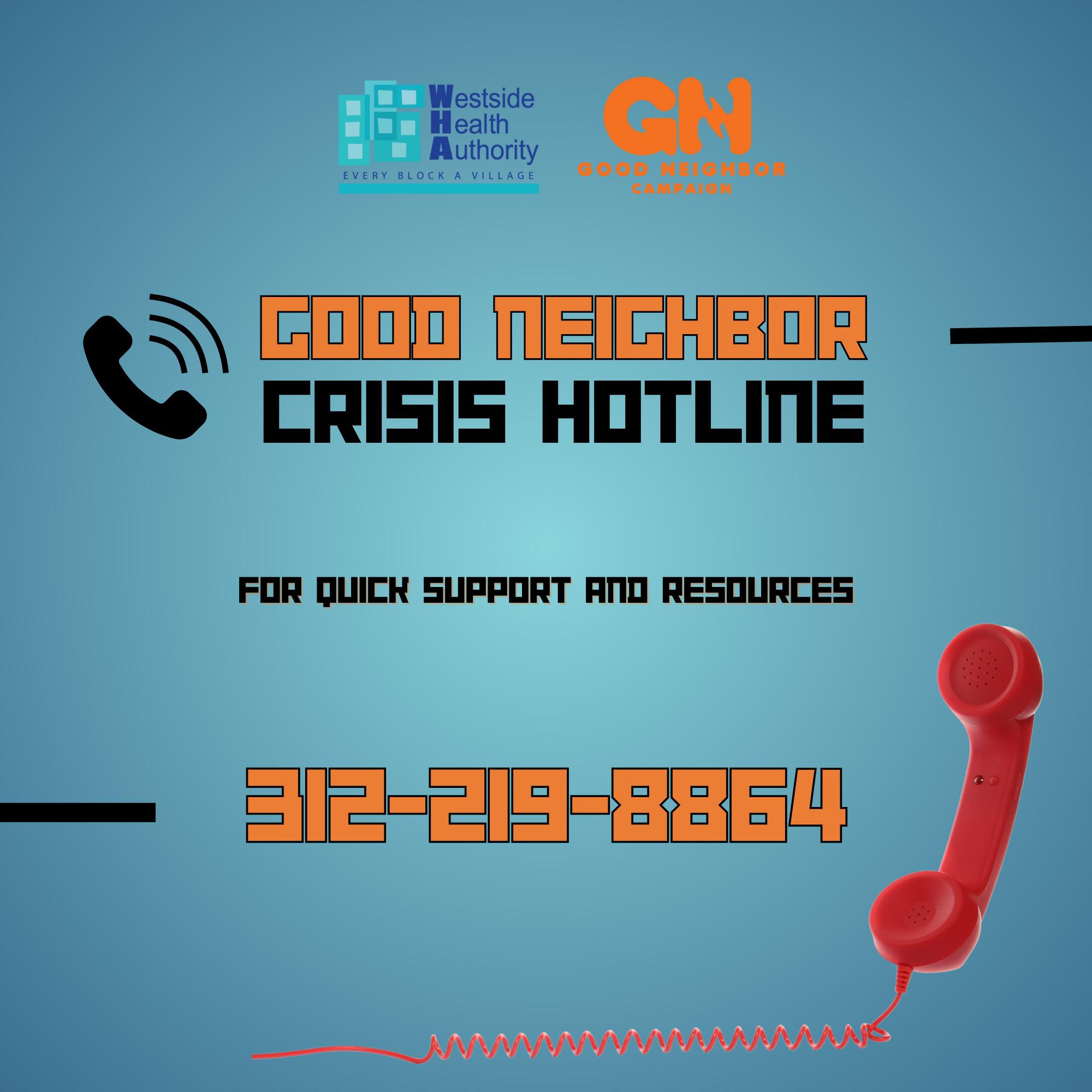

‘We



‘We

Building Trust Is Their Job
Why Westside Health Authority's Wellness Workers are heroes without capes. STORY ON PAGES 4-5

On Earth Day, April 22, community members and elected officials gathered at 5213 W. Potomac Ave., the former home of New Kingdom Church, for a groundbreaking.
Clean Comunity, an environmental nonprofit founded by Martel Richardson, plans to turn the old church building into the Solar and Wind Training Center. Once complete, the Center will feature solar panels that will help power the building and electric vehicle (EV) charging stations for community members.
Richardson secured a range of funding sources for the project, including an estimated $119,000 loan from IFF, a mission-driven community lender.
Founded in 2017, Clean Community “strives to serve low income communities , by promoting all things ‘clean’. Our purpose is to be resourceful while encouraging healthy living, safe communities and environments,” according to the nonprofit’s website.
The new Center will allow the nonprofit to build on its array of programs and services, which include solar and wind training, electrical training, HVAC training, CDL training, violence prevention, mentoring and job-readiness. Medlock Construction will lead the renovation efforts.
Ald. Emma Mitts (37th), Rep. La Shawn K. Ford (8th) and representatives from the Good Neighbor Campaign were on hand to for the groundbreaking ceremony.
[From Capitol News Illinois] Harm reduction advocates and multiple House members called for more state funding towards evidence-based solutions “beyond naloxone and safe supplies.”
Among those solutions are overdose prevention sites – a designated brick-and-mortar location where people with substance use disorders can receive clean supplies and use drugs safely in the presence of public health workers who ensure people who potentially overdose do not die.
Rep. La Shawn Ford, D-Chicago, described rising overdose numbers as an “international
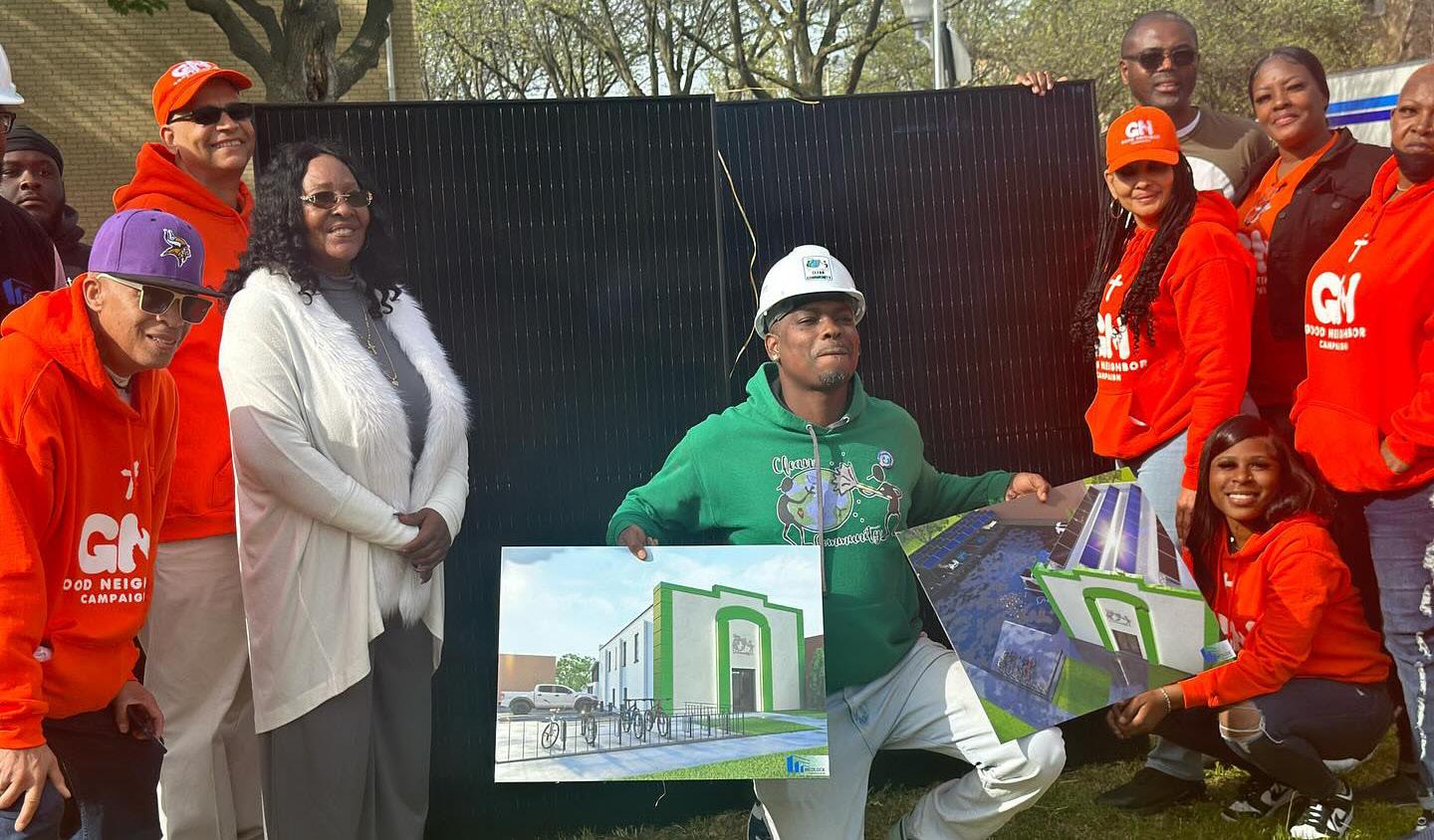

PUBLICATION TEAM
Michael Romain
Communications Director
Frank Latin Communications Specialist/ Westside Media Project Founder
Kenn Cook Jr.
Communications Specialist
Kamil Brady
Circulation Manager/Sales
Kyler Winfrey
Digital Media Specialist/Good Neighbor Campaign liaison
Trey Arline
Reporter
Asante Hayes Photographer/Videographer
Jihoon Woo
Photographer/Videographer
Paul Goyette
Photographer

problem” impacting all kinds of communities.
Ford is the chief sponsor of House Bill 2, which provides the framework for an overdose prevention site in Chicago and has languished in the Rules Committee for almost one year.
Aisha Betancourt-Esquivel became an advocate for harm reduction in 2019 after her daughter, BreAna Betancourt-Esquivel, died of combined drug toxicity at 25 years old.
“We all have loved ones that are worthy of all possible avenues to recovery,” Betancourt-Esquivel said.
“I stand here to ask for your strong consideration and support of an overdose preven-
tion site because an overdose prevention site could have helped my daughter,” she added. “Yes, it’s a wild idea but guess what? The drugs will still be here, we just want to keep these people alive.”
Rep. Lindsey LaPointe, D-Chicago, said she represents “hundreds of people who want to stop using drugs, but they live in fear and stigma.”
“With the exception of naloxone and safe supplies, evidence-based harm reduction interventions have been left out of our behavioral health and public health funding streams in Illinois,” said LaPointe, who is a former social worker and current chair of the House Mental Health and Addiction Committee.
Rep. Camille Lilly, D-Chicago, said she used her naloxone training two separate times to assist men who overdosed in her district. Rep. Will Guzzardi, D-Chicago, said he had a “dear friend” die from an overdose before he became a legislator.
“I share your passion for this issue, I share the frustration I’m sure you all experience at times,” Guzzardi said. “Why can’t we just get it done? I’m sure people in this room are feeling that way today.”
EDITORIAL BOARD
Morris Reed
Westside Health Authority/CEO
Karl Brinson
Westside Branch NAACP/President
Bernard Clay
Introspect Youth Services/Executive Director
Frank Latin
Westside Media Project/ Executive Director
Michael Romain
Village Free Press/Publisher
CONTACT US at mromain@healthauthority.org


By now, most people know about the killing of Dexter Reed, a 26-year-old man who was fatally shot by police on the 3800 block of West Ferdinand St. in Humboldt Park on March 21.
According to multiple media reports, Chicago police shot at Dexter 96 times, hitting him 13 times, in less than 1 minute. The police cut off Dexter’s white SUV after allegedly noticing that he wasn’t wearing a seatbelt (the SUV’s windows were tinted).
The story has gotten local and national attention from a range of news outlets and social media influencers, but unlike many cases of police-involved shootings in the past, there’s been ample firsthand evidence that has been compiled in the weeks after Dexter’s death.
The Triibe, a local news outlet for Black Chicago, noticed the difference between how Mayor Brandon Johnson’s administration handled requests to release footage of the shooting and how former Mayor Rahm Emanuel handled requests to release footage of Laquan McDonald’s murder in 2014.
“McDonald was fatally shot by CPD Officer Jason Van Dyke however, the public wasn’t made aware of the circumstances of his murder until a year later,” the Triibe’s Tonia Hill reported.
“Activists and journalists, including independent journalist Brandon Smith, pressured the city to release the footage after an autopsy report revealed that McDonald had been shot 16 times, nine in the back, countering police narratives that McDonald had lunged towards police.
“Smith filed a Freedom of Information Act for all the footage from McDonald’s interaction with police that day. It wasn’t until a judge ordered the city to release the footage on

Nov. 19, 2015 — 409 days after McDonald was murdered — that the public became aware of what really happened.”
In contrast, Johnson’s administration released the body-camera footage of the March 21 shooting of Dexter Reed at the family’s request and the city’s Civilian Office of Police Accountability (COPA) “released the footage and other materials on April 9, six weeks before its 60-day deadline,” the Hill reported.
Hill reported that Johnson also made multiple stops on the Westside to meet with “faith and community leaders to listen to their concerns regarding Reed’s death and strategize around solutions for communities to heal and prevent another fatal police shooting.”
The Dexter Reed shooting is a rarity among Chicago police shootings in that, roughly a month after the tragedy, regular citizens have enough firsthand evidence and access to contextualizing information to make up our minds about what happened for ourselves and to research possible solutions.
1. Go to the Civilian Office of Police Accountability (COPA) website One of the first places you want to visit online to get firsthand evidence about the shooting is COPA’s website, which you access at: chicagocopa.org/case/2024-0003052/
That link provides all “relevant video, au-
dio, and Chicago Police Department records in COPA’s possession that are required to be released related to the use of force in this fatal officer-involved shooting and the events immediately following it,” COPA explains.
That means you can access the original case incident report, the tactical respnose report of all officers involved, the traffic crash report and COPA’s press release put out after the shooting.
You also have access to footage from the body cameras of all the officers on the scene, cellphone camera footage submitted by community members who witnessed the shooting, home security camera footage submitted by residents in the area, the 911 calls made after the shooting and ShotSpotter audio capturing all of the shots fired. WARNING: Be advised that the material, particularly the video footage, is very graphic.
2. Read the federal lawsuit Dexter Reed’s family filed on April 24.
Thanks to Block Club Chicago, you can access the lawsuit online at scribd.com/document/726296961/Dexter-Reed-Lawsuit. You can download the roughly 80-page document yourself. If you don’t want to type that long link, just Google: “Dexter Reed lawsuit pdf” and it will likely be the first hit that appears in the search results.
The lawsuit provides information on what Dexter was like as a person and a detailed description of what his family believed happened when he was fatally shot.
3. Look at the press conference Mayor Johnson held after Dexter’s death on Twitter at twitter.com/i/ broadcasts/1OyKAWdkrogJb
You don’t have to take other people’s word about what Mayor Johnson, Cook County State’s Attorney Kim Foxx and other elected officials said after Dexter Reed’s shooting death. You can listen to them yourself. If you don’t want to type in that link, simply Google “Mayor Brandon Johnson Dexter Reed press conference” and multiple YouTube videos should show up.
4. Follow trusted local news sources. There are a few local news sources that have covered Dexter Reed’s fatal shooting pretty
thoroughly. They include Block Club Chicago and the Triibe. The Triibe, in particular, puts the Dexter Reed shooting in the context of past police-involved shootings, pointing out the Johnson administration’s response to this most recent shooting compares to prior administrations.
5. Read firsthand reports like the April 2024 study by Impact for Equity and the Free 2Move Coalition to get a larger social perspective on Dexter Reed’s death and some information on formulating your own solutions to the problem. You can just Google: “Chicago 2023 Traffic Stops Data Report” and the Impact for Equity study should come up.
According to the Impact for Equity report, in 2023, “just two categories of minor offenses comprised almost 70% of all traffic stops made by CPD — improper or expired registration plates and headlight, taillight, and license plate light offenses. These are offenses that generally are not indications of dangerous driving behavior and can often be used as opportunities for a pretextual stop. Speeding, an offense which can present traffic safety dangers, was the cited reason in only 0.7% of stops.”
What’s more, 22% of Chicago’s traffic stops happened in two predominantly Westside police districts — District 10 and District 11 — home to only around 7% of the city’s population. Ninety-six percent of the people living in those two districts are Black and Brown. Meanwhile, District 19 “had about one-fourth of the number of stops as District 11, despite having nearly three times the number of residents. District 19, home to Chicago’s Lincoln Park, Lakeview, and North Center neighborhoods, is 74% white,” the report states.
The study’s data incidate that “most of these stops are made under the pretense of a minor traffic violation when the true purpose is to fish for evidence of a crime, despite there being no evidence that a crime has been committed.
“Repeated analyses show that these traffic stops are not improving traffic or public safety. Instead, pretextual traffic stops are disproportionately impacting Chicago’s Black and Latine drivers and communities and wasting our City’s resources.”

helping families in a fire to saving lives, Wellness Workers are many times the first to respond to Westsiders in needBy Michael Romain & Bob Uphues Editor & Former Communications Specialist
According to a CBS News report, a coach house at 5106 W. Chicago Ave. caught fire on April 18. The structure was destroyed and four people — two adults and two children — were displaced. No injuries were reported.
“The Fire Department said someone maliciously set fire to a mattress outside the coach house, and it spread,” CBS reported.
But that’s not the whole story. A group of Wellness Workers with Westside Health Authority (WHA) were among the first community members on the scene of the fire.
“Everyone got out safe,” said Wellness Worker Monique Almore. “We also brought shirts for the kids because they didn’t have any clothes on and we made sure everyone was safe and gave them resources as well.”
That’s just another day on the job for Monique and her team of roughly a dozen Wellness Workers whose main job is to
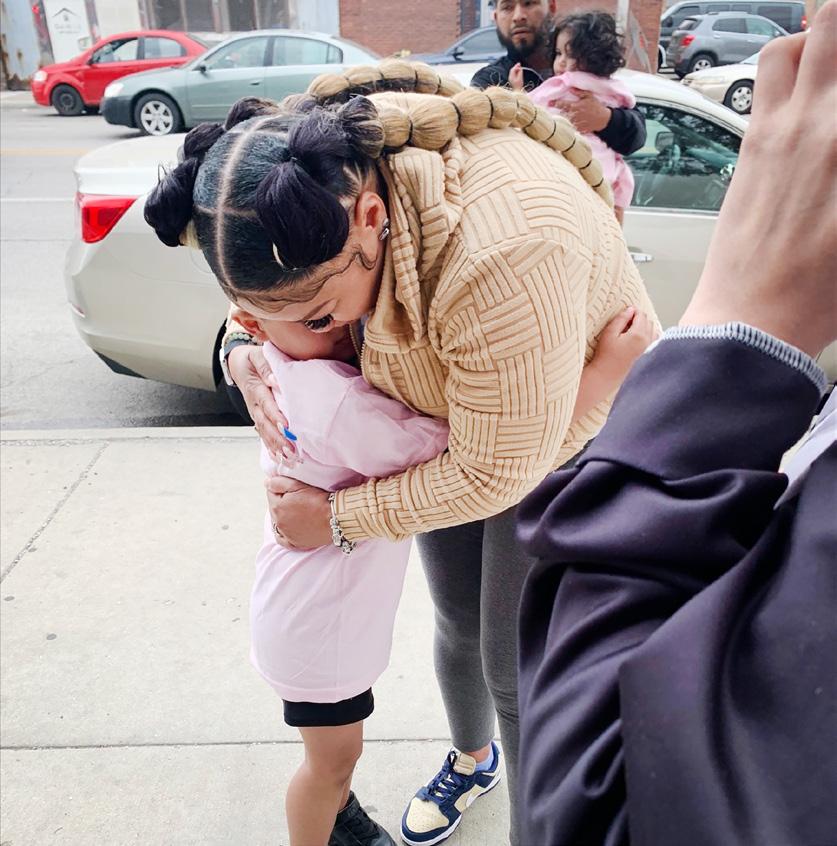
“We've been in tune with people who try to turn the community around."

walk parts of the Westside to make sure people get the help they need, particularly in the form of resource flyers and intake forms — the latter being the first point of contact a person makes before accessing WHA’s many resources and support services.
The work can often be thankless, but it’s also invaluable and what makes them some of the most trusted people in their neighborhoods — as our staff photographer, Kenn Cook Jr. (who shadowed the workers one
day earlier this year) can attest.
Many of the Wellness Workers are former Corridor Ambassadors, individuals paid to walk busy economic strips throughout the city to build relationships with business owners and residents.
Last year, we interviewed some of those Corridor Ambassadors before they were promoted to Wellness Workers and much of what they said about their Ambassador roles translates to their Wellness work, with one key difference. Now, they have a much larger area — well beyond one or two corridors — where they can spread their positive energy.
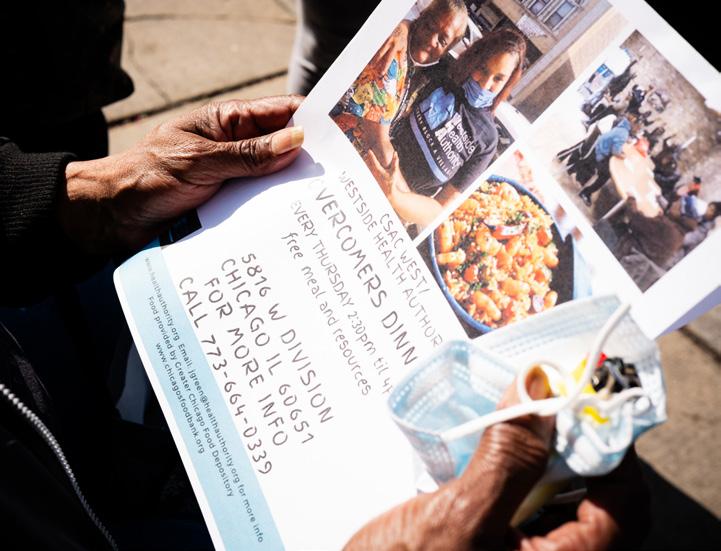

The people are more responsive and respect what we’re doing. When we first started, people were kind of standoffish or didn’t know who we were and what we do. Now we are familiar faces in the neighborhood, so they look forward to seeing us every day, and they we we’ll be out there with fliers. They might know someone who might need resources and they refer them to us.
— Monique Almore


My supervisor [Joseph Green], I guess he felt like I was the one for this job, so he asked me did I want to [be a Wellness Worker] or did I still want to be an Ambassador. I felt like I should be moved up.
It’s almost the same, but with community wellness we do a little bit more, as we’re moving around more, moving to all of the corridors instead of staying on one corridor. We’re able to see new things, meet new people, engage with new people such as churches and schools.
We’ve been in tune with people who try to turn the community around. We’ve engaged with more and more business owners and saw what they think of our neighborhood, what would be a good idea for this neighborhood in particular.
You might have a tore-down lot or something, they might want to put up a pop-lot where you can have things for the community. We can tell our boss [Green], and if he has anything that he can help with, he helps.
Kaneisha Dyer

I grew up in Yazoo, Miss., a small town. I came up here two years ago. My mom was up here on hospice. I worked construction [in Mississippi] and I can remember that day like it was yesterday. It was 12 o’clock. I was doing a back deck, and I got the call and they said you got to get to Chicago immediately. Your mom’s got three months to live. I was unemployed and I was desperately in need of a job. I ended up getting a job at Dollar General and two weeks later Joseph called and told me I got the [Ambassador] job.
It was a blessing. I got a chance to meet a lot of new people. When I first came up here, I was kind of nervous and didn’t really know anybody. I was kind of scared to even walk the corridor down Chicago Avenue. By me just walking up and down the corridor, now it’s like everybody knows me. They look out for me. I know over 100 people on Chicago Avenue. I know all the barbershop people, the store owners.
We pass out fliers on resources and check on businesses. Sometimes we may even have to report crime. I’ve been trained to do Narcan [an opioid overdose antidote]. I actually performed it once. My house is right off the avenue, and I was going home and I saw a guy laid back with his eyes rolled. First, I called 911 and then I gave him two shots of Narcan and pressed down on his chest like they told me and waited until the ambulance came and saved his life. I know a couple of guys on Madison Street who did the same thing.
— Jerry Dent


Editor’s Note: In November 2023, we took a tour of the ASPIRE Center. We’ve reproduced that experience for you here. In the weeks and months ahead, we’ll update you on how the project has advanced since then.
Westside Health Authority CEO Morris Reed and Austin Coming
Together Executive Director Darnell Shields on Nov. 8 got their first inside look at the progress being made at the future ASPIRE Center for Workforce Innovation, which is under construction at 5500 W. Madison St., formerly home to Emmet Elementary School.
Construction on the $40 million project started in June and won’t be ready for occupancy until early 2025, but foundations have been poured for the new three-story, glass-enclosed atrium and an addition to house the building’s mechanical systems, which will be crowned with a rooftop terrace connecting to the atrium’s second floor.
Inside, Reed and Shields got a glimpse at how the former school’s spacious classrooms and offices will be transformed to accommodate those two nonprofits and the Jane Addams Resource Corporation, which will deliver free training in skills needed for advanced manufacturing. The center will also serve as a small business incubator and will also house a BMO branch bank, providing financial services as well as financial literacy training.
of The Lamar Johnson Collaborative; Richard Wrigley, senior project manager for the project’s general contractor, Sargent Blinderman; and Alyssa Krause, project manager from Project Management Advisors.
The initiative has been in the works since 2018, when the Westside Health Authority acquired the 3-acre parcel at the northeast corner of Madison Street and Central Avenue in Austin. WHA and ACT have partnered to make the ASPIRE Center for Workforce Innovation a reality.
Initially, said Reed, they considered repurposing the school for housing and even demolishing the building, which was constructed in 1913, to develop senior housing.
“But when we really engaged the community, the community said, well, we need to really provide some opportunities for young people,” Reed said. “We need jobs, we need financial centers, we need entrepreneur development centers. So, we said, you know what, we can make this the Workforce Innovation Center.”
This is a regular feature of The Culture in which we’ll provide routine updates on the progress of the ASPIRE Center for Workforce Innovation, an initiative currently underway at the former Emmet Elementary School, 5500 W. Madison St. in Austin. The project is being developed by Westside Health Authority and Austin Coming Together and is scheduled to be completed next year.
A highlight of the tour was a semi-finished mockup of one of the school’s classrooms, which illustrated the challenges and opportunities renovating a 110-year-old building. While the spaces will accommodate centers for advanced manufacturing training and entrepreneurship in the 21st century, the building’s historic character will still shine through by retaining some features, such as original hardwood floors and storage cabinets, wood trim and even some of the original wood hallway lockers.


new finishes alongside each other,” said Wrigley while showing off an in-construction classroom.
“I’m starting to get misty-eyed, because I can feel us in the space now. It feels real,” said Shields after a roughly 30-minute tour on Nov. 8 accompanied by architect Max Komnenich
“What we’ve tried to do is strike a balance between what we need to do in order to make this a functional room but acknowledge the fact that we do have the old and
Some 120 windows will be replaced, and some bricked-up openings will get new windows, which will match the building’s original window dimensions and flood interior spaces with natural light.
While there’s still a long way to go, standing within the concrete foundation that forms what will be the glass atrium, you can
start to get a sense of the scale of the future ASPIRE Center.
“I’m starting to get images of us doing work here, having meetings,” said Shields. “And it’s amazing, just the scale of everything, because what we’ve been living off of is these drawings -- for years. To actually be standing in it now, you can really start to get, spatially, just a better sense of how people are going to be moving through this facility, and that really just blows my mind.”





The West Side Block
Club Association hopes
a
gang truce
stems the tide of summer violence on the WestsideBy Michael Romain & Trey Arline Editor & Contributor
“Somebody’s daughter is counting on us! Somebody’s son is counting on us! Somebody’s child, mother, father is counting on us to make a difference and we cannot be scared!”
Talei Thompson, a Westside native and founder of the West Side Block Club Association, shouted into a bullhorn during a rally held in a parking lot on Madison and Hamlin on April 13.
Roughly 30 minutes later, Thompson would lead a procession of a few hundred marchers and drivers,
many of them members of the 7 Slot Platoon — a Jeep organization that promotes economic development — west on Madison towards Pulaski.
That Saturday’s march had been in the works for months, well before the fatal shooting of 26-year-old Dexter Reed in Humboldt Park on March 21. The organizers held the march to promote a truce among six of the most prominent gangs that Thompson and other local organizers had brokered ahead of the city’s potentially fatal summer months.
But Dexter’s killing nonetheless loomed large over the event. Death by gun — whether that of a police officer or another civilian — is still death by the gun. And many of the people who participated in the march
didn’t make a distinction. They wanted all gun violence on the Westside to end, regardless of who holds the weapon.
Dickson Amoah, 44, traveled from the suburbs to be part of the Westside. He wore a shirt that reminded the viewer that Fred Hampton, the leader of the Illinois chapter of the Black Panther Party, was murdered.
“We’re out here to put a stop to all the murders happening in Chicago. We have to go back to history,” Dickson said. “Let’s call it all out. Let’s call it out with civilians and with the [police] too.”
Talei said coordinating both the march and the truce involved the close collaboration of a planning team that included West Side Block Club Association member LaTonya Brown, Westside activist Crystal E. Gardner, of the independent political organization 290 IPO, local organizer Greg Matthews, of Garfield Park Rite to Wellness, and Min. Phil Purkett, of New Mission Temple COGIC.

are grateful for that.”
It wasn’t clear how many of the gang leaders were present during Saturday’s march, since they weren’t identified for safety reasons. But what was much more obvious was Talei’s goal to cut the number of homicides committed on the Westside between May 1 through Sept. 1 to as close to zero as possible.
According to the City of Chicago Violence Reduction Dashboard, there were 70 total homicides (60 of them the result of fatal shootings) in Austin, North Lawndale, Humboldt Park, West Garfield Park and East Garfield Park between May 1, 2023 and Sept. 1, 2023 — a roughly 17% increase from 2022, when there 60 homicides (58 of them from fatal shootings) in those communities in that time period.
“Somebody's daughter is counting on us! Somebody's son is counting on us!”
There is at least one positive takeaway from the data. Between May 1, 2023 and Sept. 1, 2023, there were 333 shooting victimizations in those five Westside communities mentioned above — down 10% from that time period in 2022.
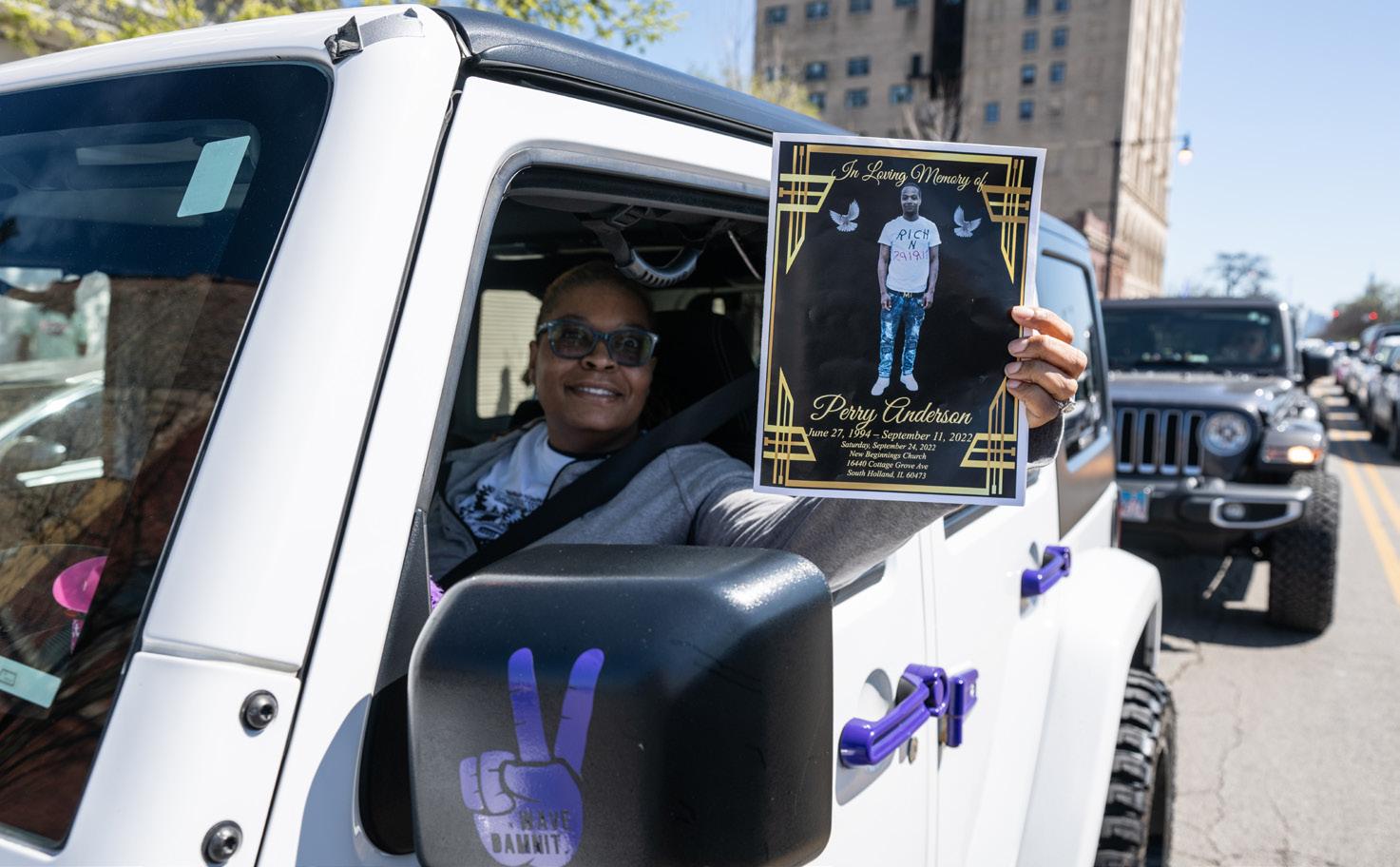
Talei said women were critical in organizing the truce and the march, adding that they greased the lines of communication between gang leaders and local organizers.
“This march would not have been possible had it not been for women,” he said. “There are individuals who I could not get in touch with and didn’t want to get in touch with me, but women got in touch with them for us. We
Marchers like community member Michael Morris hopes the work of organizers like Thompson will lead to an even starker reduction in shootings. For him, any number is too high.
“I’m sick about it, and it happens way too often,” Michael said. “By the summer, I hope everyone is listening to this protest and we find a way to make it better.”

Did you know the Mayor’s Office Violence Reduction Dashboard shares real-time data on violence trends in Chicago and its inequitable impact across the city, as well as critical information about the City’s community-centered and trauma-informed response?
The data in the Dashboard is updated daily with an approximately 48-hour lag. Due to the nature of CPD operations and
often changing circumstances, some recorded data about incidents and victimizations may change once additional information arises and regularly updated datasets on the City’s public portal may change to reflect new or corrected information. Remember, it’s your right to know. Access the publicly available information at: chicago.gov/city/en/sites/vrd/home.html


Dr. Erica E. Taylor, an obstetrician/gynecologist, knows what it’s like to work and live in what she called a maternity healthcare desert. The veteran physician has worked at two hospitals on the South Side and in the south suburbs that closed.
“When I trained at Mercy Hospital, we were doing about 3,000 to 4,000 deliveries every year,” Taylor said, adding that the hospital’s closure in 2021 created a gaping hole on the South Side.
The hospital’s closure meant that many pregnant women in the community now have to travel even further, often on public transportation, to get critical maternal healthcare services.
Taylor was one of four maternal health experts who were panelists at a community film screening and discussion of the Hulu film “Aftershock,” which focuses on the Black maternal health crisis in the U.S. The screening, sponsored by the Chicago Branch Westside NAACP among other organizations, happened at Loretta Hospital, 645 S. Central Ave., on April 11.
The Westside NAACP, along with Bethel New Life and West Side United, also hosted a panel discussion at Bethel New Life on April 16,. The two discussions were among a host of events happening across the city during Black Maternal Health Week, which ran from April 11 through April 17.
According to the Illinois Department of Public Health (IDPH), Black women are twice as likely to die from a pregnancy-related condition as white women. The IDPH added that discrimination was present in 2 of 5 deaths and more likely to be a contributing factor in deaths among Black women.
Research shows that the maternal mortality rate in the United States is increasing and

Panelists discuss Black maternal health during a discussion at Bethel New Life on April 16. The conversation was one of several happening on the Westside during Black Maternal Health Week.
PHOTO BY KENN COOK JR.outstrips that of other industrialized nations. For instance, data found in the American Journal of Obstetrics and Gynecology show that “maternal mortality rates in the United States have continued to increase from 17.4 in 2018, to 20.1 in 2019, 23.8 in 2020, and 32.9 per 100,000 live births in 2021.” In France, the country with the second-highest maternal mortality rate, 9 per 100,000 live births result in the mother’s death.
During the April 11 screening of “Aftershock,” many of those in the audience were shocked to learn that one factor driving the high maternal mortality rates in the U.S. is the significant rise in the number of deliveries by cesarean section — despite the procedure being much riskier than vaginal delivery.
According to data provided by the University of Utah, 40 years ago, “one in 20 babies in the U.S. were delivered by cesarean section. Today, it’s about one in three deliveries.”
The reason for the rise in cesarean sections? Hospitals make more money from cesarean sections compared to vaginal delivery and they’re often more convenient for doctors to perform.
Expert panelists at those Westside events offered a range of possible solutions to the systemic problem of Black maternal mortality and practical steps that individual mothers and their loved ones can take.
Sona Smith, a birth equity advocate, said at the Loretta Hospital event that collective ac-
tion and collaboration are essential to tackling the Black maternal mortality crisis.
“We can’t try to resolve these issues in silos,” she said, before advocating for people to learn from how their ancestors approached childbirth.
“I think about my ancestors and how they gave birth,” Smith said. “It did not used to be that the first birth you attended was your own [baby’s].”
Smith said in many Black communities in the past, everybody was present for the birth and everyone acted as an advocate for the birthing mother. She urged communities to go back to that collective birthing tradition. She said in addition for more doulas, which are people trained to support women during and after childbirth, the community needs to be more active in the birthing process.
“The entire [community] has to be able to see a pregnant woman on a bus and know to ask, ‘Did you drink water today?’ If you see her in the restaurant, ask her, ‘What are you eating?’ We need to bring that back into the community.”
Smith also said that the systems of maternal care in the U.S. need as much support as the systems that harm.
“We need our systems of care to be as robust and solid and supported as our systems of harm,” she said. “We definitely need film, storytelling, art and media that humanizes and put names and faces to the statistics.”
Concrete solutions offered
Panelists provided some concrete actions that community members can take to confront the Black maternal mortality gap. Here are some ways you can help solve the problem:
• Advocate for community-centered policy solutions. For instance, the state should offer Medicaid reimbursements for doula services. “We see a lot of states moving toward Medicaid reimbursement for doulas, but the states where the community was involved in that policy-making have higher reimbursement rates,” said Sona Smith. “We need folks impacted at the table.”
• If a loved one is pregnant, don’t let her go through that pregnancy by herself. Attend doctor appointments with her and be an advocate for her throughout the process.
• Don’t be afraid to choose another medical provider if yours (or the one assigned to your loved one) is insensitive to your needs.
• Pressure local elected officials to provide funding for more places like the Chicago South Side Birth Center (the first Black-owned birthing center that’s scheduled to open in 2025) to be built on the South and West Sides.
• Get educated about the signs and symptoms that are associated with maternal mortality and take preventative measures to ensure the health and wellbeing of the mother and child.
• Seek out and support the organizations that are on the frontlines of Black maternal health in Chicago. Her are just a few of them:
– Ndoula Community Alliance | ndoulacommunityalliance.webador.com
– Chicago Volunteer Doulas | thecvd.org
– Chicago Birthworks Collective | chicagobirthworks.com
– Melanated Midwives | melanatedmidwives.org/
• Share and experience joyful birthing stories. “We have to make sure that we are also sharing positive, joyful birthing stories. Hearing the statistics, knowing that this phenomenon exists, creates additional stress, which creates high blood pressure, which can be a self-fulfilling prophecy,” said Smith.
Search for technological tools, such as the Irth App (irthapp.com) that allows Black pregnant women to track and share their experiences of racial bias in the medical industry.

Westside Media Project (WMP) is looking to partner with area high schools to locate students interested in developing media skills by participating in a paid journalism internship program.
The selected student(s) will receive a series of trainings, tools and resources that provide insight and exposure into the world of journalism. In addition, students will be assigned to cover and write one to two local stories that will appear in The Culture newspaper. At the end of the internship, students will understand the importance of ethical standards in journalism and trained in media literacy, particularly the skill of distinguishing facts from opinions. The training is aligned with the Illinois Learning Standards and designed to help students improve their research, interviewing and writing skills. The training willa lso help students develop and utilize their critical thinking skills to process
information and produce accurate, responsible news stories.
This is a unique opportunity for area students who want to develop a voice on issues they view as important and that impact their lives. Students will receive a stipend of between $50 and $100 per issue.
If you know of a student in grades 9 through 12 who may be interested in this opportunity, please have them scan the QR code to apply or email us at westsidemediaproject@ gmail.com explaining why they are interested in the program.
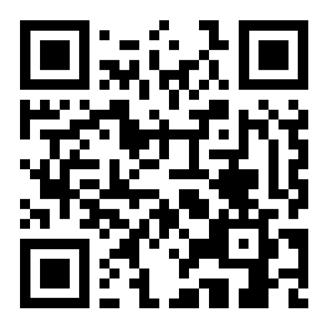
Westside Media Project’s mission is to provide exposure to networks, opportunities and pathways in media-related fields as well as to provide assistance to participants in utilizing their words, voices and skill sets to tell their own stories for individual and community transformation.
The Culture is looking to highlight Black excellence among our Westside youth. We will begin recognizing and celebrating students’ accomplishments in an effort to boost their confidence and self-esteem.
Publicly acknowledging student achievements motivates not only the students who are recognized, but also their peers. It also sets a positive example and encourages others to work hard and achieve similar success.
When students see that their hard work and accomplishments are valued and celebrated, it fosters a positive and supportive learning environment. This positivity can lead to increased engagement, participation, and overall academic success.
Highlighting student achievement can also inspire other students to set goals for themselves and work towards achieving them. It promotes a culture of goal setting and continuous improvement.

If you know of a student in grades 6 through 12 who has excelled in at least two of the following areas, please scan the QR code to complete the nomination or email us at westsidemediaproject@gmail.com:

• Academic Achievement: Demonstrates significant improvement or outstanding performance in their studies
• Personal Growth and Resilience: Shows significant personal development or improvement in any area. Displays resilience and a positive attitude.
• Character and Values: Exhibits integrity, honesty and respect for others.
• Leadership and Initiative: Displays leadership qualities in the classroom and other school activities.
Speaking up
On April 10, members of the Illinois State Black Chamber of Commerce (ILBCC), the Austin Chamber of Commerce and the Austin African American Business Networking Association (AAABNA) traveled to Springfield to lobby in support of Diversity, Equity, and Inclusion (DEI) initiatives.
“Today, we stand at a pivotal juncture in our nation’s history,” said Larry Ivory, the ILBCC’s president and CEO. “The concerted efforts to undermine DEI programs not only threaten the progress we’ve made towards equality and inclusion but also aim to erode the very fabric of our diverse society.”
PHOTO BY KENN COOK JR.